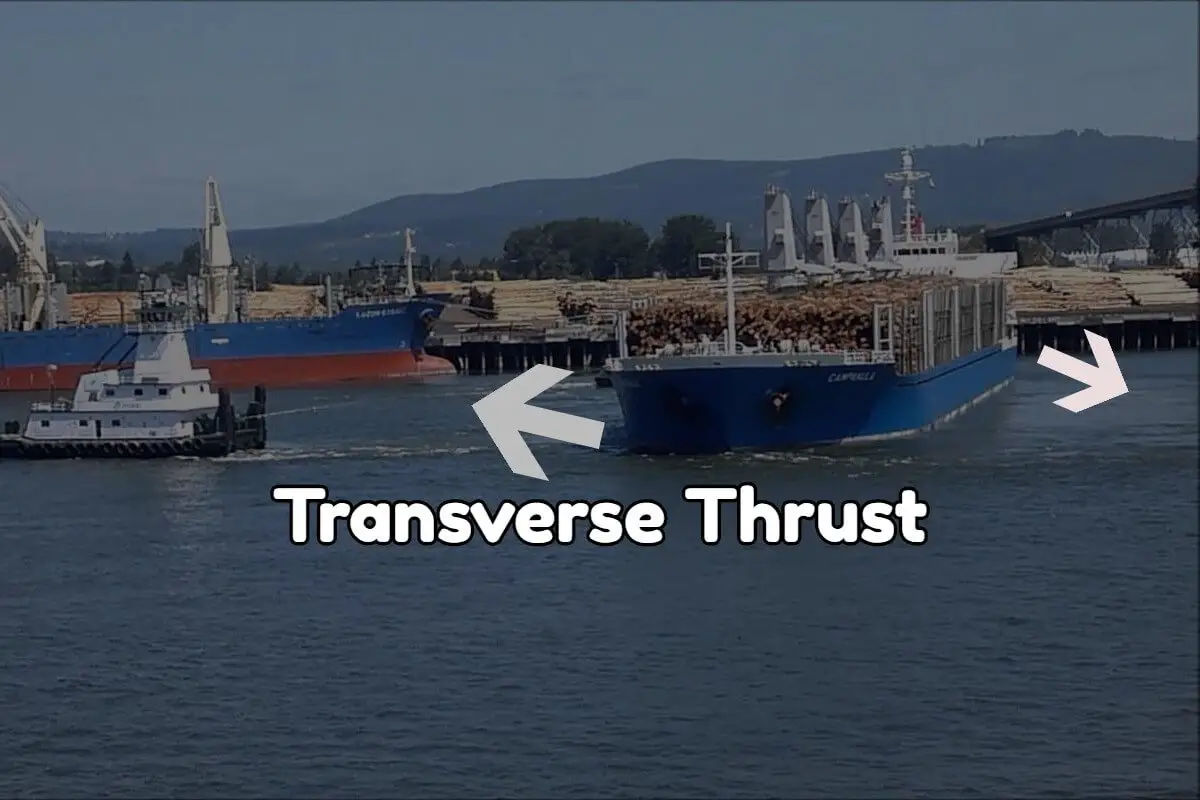Transverse Thrust The force with which the water acts upon the propeller blades is not just in the longitudinal direction but also has an athwartships component. This is known as transverse thrust. Going Ahead If we look at a ship with one right-handed propeller (i.e. the propeller rotating n a clockwise direction when going ahead and as viewed from astern) and the rudder on the centre line the following situation is the norm: In the initial stages of the ship getting underway, the vessel's speed is low but the engine (and, therefore, the propeller) is at high Rpm ahead. During this … [Read more...]
